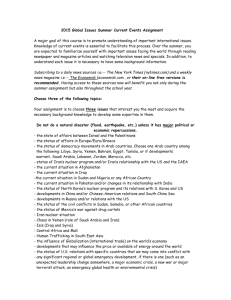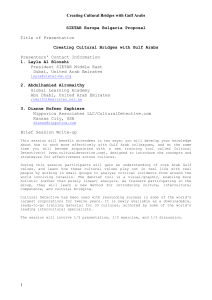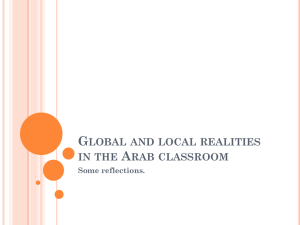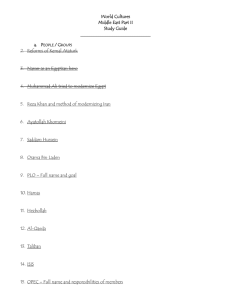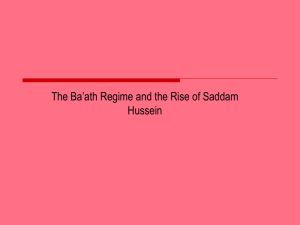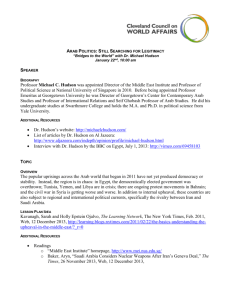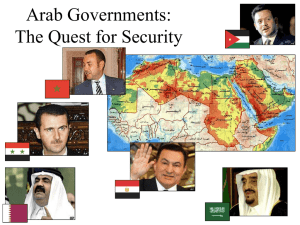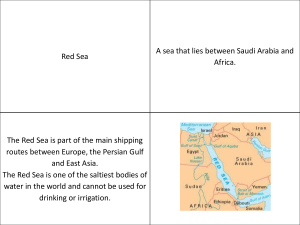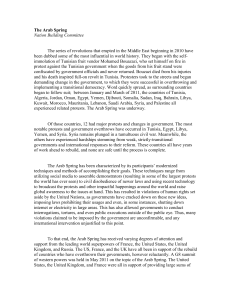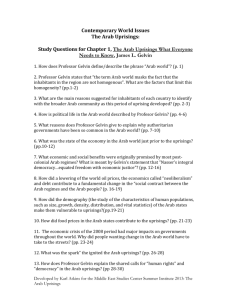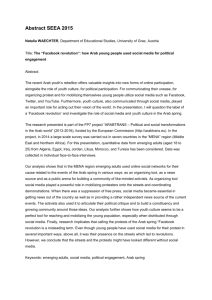Europe in the Middle East
advertisement
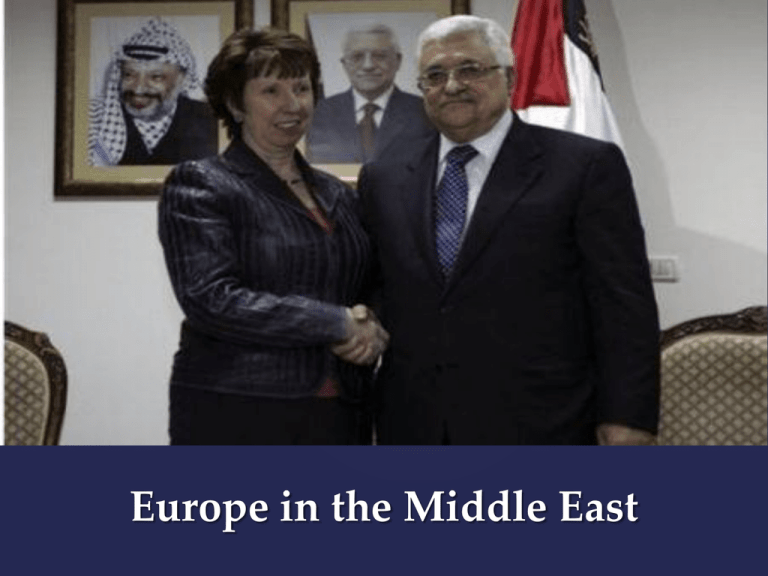
Fawcett: International Relations of The Middle East 3e Europe in the Middle East - The four phases of Europe-Middle East relations 1) From World War I to the 1950s 2) The Cold War era 3) Post Cold War to 2010 4) The Arab Uprisings and their impact Phase I: The Imperial Era and its Legacy - European imperialism in Middle East largely a British and French endeavour. - UK interests: protect communication and trade routes, access to oil after navy conversion. - French interests in extending Francophone empire in North Africa and proprietorial connection in Levant. - Wartime schemes: McMahon-Hussein, Sykes-Picot, Balfour. - Mandate system: Arabs of Levant and Mesopotamia become citizens of client states of European victors of war division of region and Arab narrative of imperial plot to divide and rule. McMahon-Hussein (19151916) Phase II: Imperial Retreat and Cold War Rivalries - Arab nationalism and independence become rallying cries. - Palestine: British retreat UN partition plan first ArabIsraeli war and establishment of State of Israel in 1948. - 1956 Suez Crisis is ultimate humiliation for French and British; UK withdrawal from Gulf in 1971 is last step in imperial retreat. - Oil boom in 70s and 80s European competition for sales of consumer goods and arms, funds flow to international banking (i.e.Wallstreet and London ). - UK makes weapons sales that the US can not (e.g. Al-Yamamah deal). France 3rd biggest arms supplier to Arab Gulf states. - Europe on sidelines of Arab-Israeli issues – US is key. David Ben-Gurion proclaiming Israeli independence on 14 May 1948 Rebels in Yemen inspired by then Egyptian President Gamal Abdul to force British withdrawal from the region Al Yamamah: The name of a series of a record arms sales by the United Kingdom to Saudi Arabia Phase III: The EU & Regional Security - European emphasis on “soft power”, international law, and institutionbuilding. - In 1990s, EU and US policies are distinct but complimentary: Gulf War, containment of Iraq, policy towards Iran, GCC. - Europeans split ranks over American led Iraq War(2003) subsequent timidity about criticizing US elsewhere in Middle East. - Bombings in Madrid, London and debates within Europe over Iraq, immigration, religion, etc. The Quartet on the Middle-East Peace Process in 2004 Phase III: The EU & Regional Security (continued) - The “Mediterranean Neighbourhood”: ties of geography, economics, immigration between Europe and the Middle East European policies reliant on “soft power” and socioeconomics. - In 1990s, aspirations for area of economic cooperation and development: from Euro-Mediterranean Partnership (1995) to European Neighbourhood Policy (2004) and Union for the Mediterranean (2007). - Europe and the Peace Process: embrace of two-state solution, but no concerted strategy – assumption that only the US can make a deal happen. President Mahmud Abbas welcomes European Union Foreign Policy Chief Catherine Ashton upon her arrival for a meeting in the West Bank city of Ramallah (06.01.2011) Phase IV: Europe and the Arab Uprisings - Tunisian revolt unexpected in Europe – Ben Ali’s regime seemed exemplar of EU-advocated process of economic/political reforms. - In contrast to overthrow of Mubarak, in Libya there was a role for external intervention. However, this does not set a precedent for action elsewhere in the region. - Concern over Iranian nuclear issue longstanding prior to the uprisings; possibility of war compounds sense of turmoil in the region. Chief negotiator Catherine Ashton and Iran's foreign minister announce agreement on Iran's nuclear program in Geneva. (24.11.2013) Thanks
